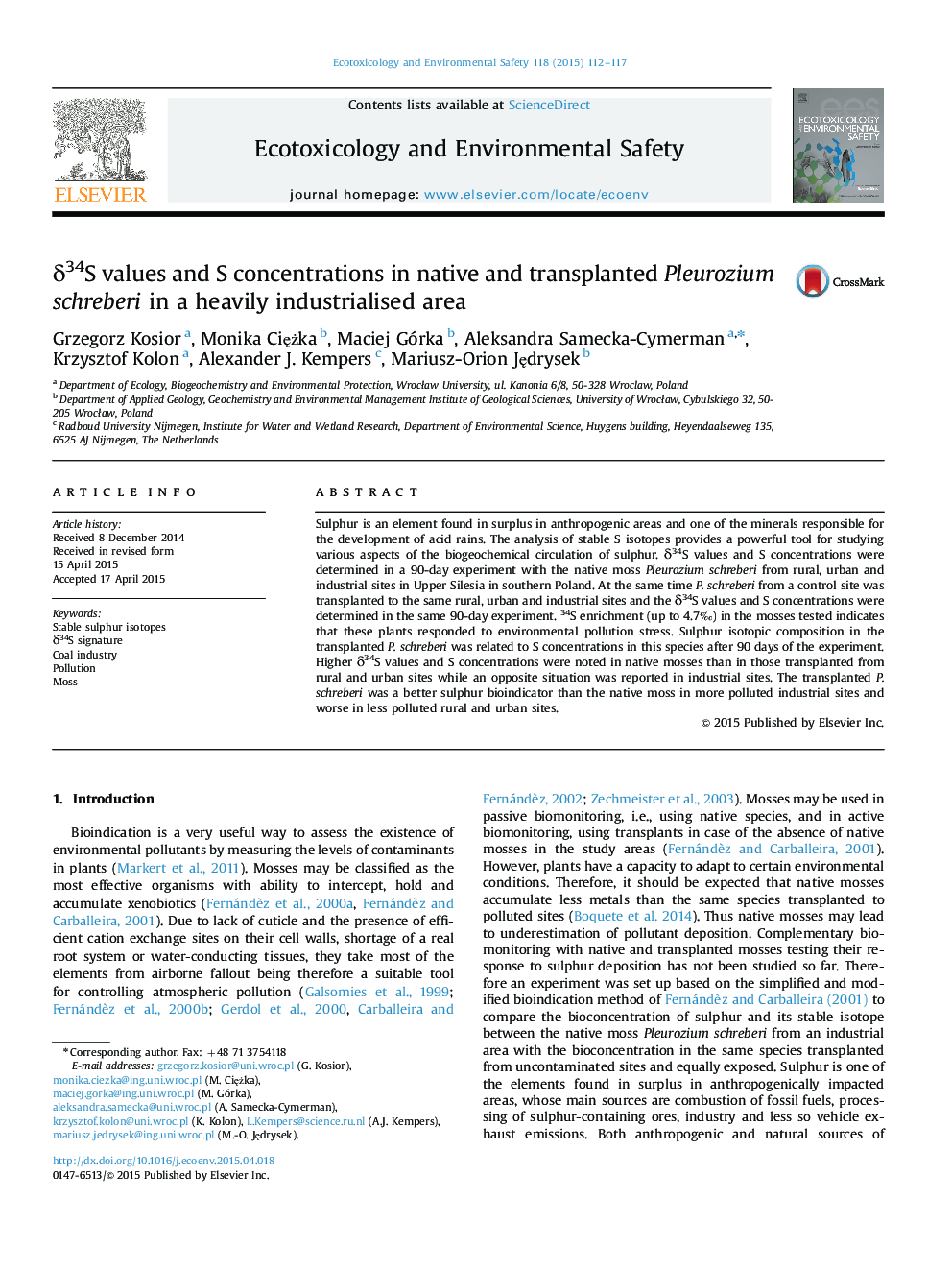| Article ID | Journal | Published Year | Pages | File Type |
|---|---|---|---|---|
| 6312136 | Ecotoxicology and Environmental Safety | 2015 | 6 Pages |
Abstract
Sulphur is an element found in surplus in anthropogenic areas and one of the minerals responsible for the development of acid rains. The analysis of stable S isotopes provides a powerful tool for studying various aspects of the biogeochemical circulation of sulphur. δ34S values and S concentrations were determined in a 90-day experiment with the native moss Pleurozium schreberi from rural, urban and industrial sites in Upper Silesia in southern Poland. At the same time P. schreberi from a control site was transplanted to the same rural, urban and industrial sites and the δ34S values and S concentrations were determined in the same 90-day experiment. 34S enrichment (up to 4.7â°) in the mosses tested indicates that these plants responded to environmental pollution stress. Sulphur isotopic composition in the transplanted P. schreberi was related to S concentrations in this species after 90 days of the experiment. Higher δ34S values and S concentrations were noted in native mosses than in those transplanted from rural and urban sites while an opposite situation was reported in industrial sites. The transplanted P. schreberi was a better sulphur bioindicator than the native moss in more polluted industrial sites and worse in less polluted rural and urban sites.
Keywords
Related Topics
Life Sciences
Environmental Science
Environmental Chemistry
Authors
Grzegorz Kosior, Monika CiÄżka, Maciej Górka, Aleksandra Samecka-Cymerman, Krzysztof Kolon, Alexander J. Kempers, Mariusz-Orion JÄdrysek,
